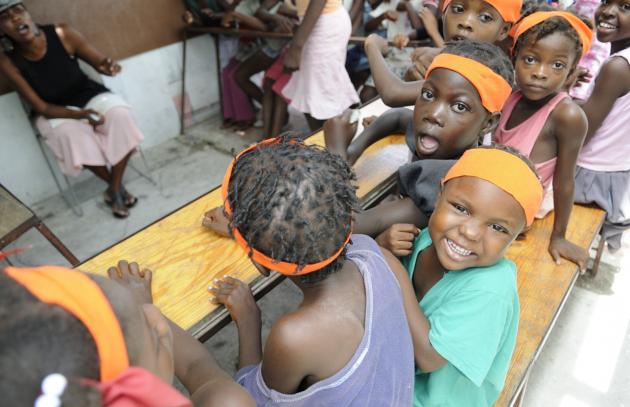abandon_scolaire_en_haiti .jpg

With a dropout rate of 7% in only the first year of primary school, Haiti continues to lose a significant number of students throughout the basic education cycle. About 40% of pupils drop out before the end of Grade 9. The causes are all the more complex not only because the Haitian education system is fragile in terms of governance, access to schooling, and quality of education, but also because the country has significant departmental disparities that need to be taken into account in planning.
In Haiti, some education-related indicators are encouraging. Entry to the first class of primary school is now almost universal and access to education has improved overall in recent years.
The dropout rate, on the other hand, remains worrying. Some 10% of Haitian students drop out before Grade 6 of basic education and 40% before the end of Grade 9 (the last grade), according to estimates from the 2019 national sector analysis. In a country with a history of long-term crises, the 2019–2020 school year is, unfortunately, not exempt from the dropout problem. Moreover, schools closed down twice: first in autumn 2019 when the country was paralysed by the socio-political situation, and then again, a few months later with the emergence of the COVID-19 pandemic.
"‘The school dropout situation in Haiti is a national problem, and the contributing factors are both endogenous – i.e. specific to the education system – and exogenous. They may be different and/or combine in a different way from one department to another, or even from one commune to another".
Hélène Bessières - Coordinator of the mission to support the capacity development of the Departmental Directorates of Education in Haiti
Dropping out of school: Departmental disparities in figures
The Haitian education system is based on a nine-year basic education cycle, broken down into three phases.
- The diagnosis of the Departmental Directorate of Education in the South showed that the dropout rates in the department were relatively low: 3% in Grade 1 of primary school, but rising to 8% in Grade 5 and 11% in Grade 6.
- Conversely, in the Artibonite department, in the centre-west of Haiti, dropout rates remain at around 6% in Grade 1, jumping to 31% in Grade 5, then falling to 23% in Grade 6.
Faced with such differences, it is essential to implement strategies specific to each department.
Multiple and intertwined causes
The school dropout phenomenon is complex, in Haiti as elsewhere. The triggering factors may be related not only to macro-societal variables but also to the school and family environment of each pupil.
Among the universal factors affecting dropout rates in the country, the cost of education stands out. In Haiti, often described as one of the poorest nations in the world, private schools account for 85% of schooling in the basic education cycle, and even more at secondary level.
Erick Derius, a former school headmaster, is responsible for planning within the Departmental Directorate of Education (DDE) of the North Department. In 2019, as part of an IIEP-UNESCO technical support mission to Haiti, he took part in a diagnosis of the departmental education system. He is also undergoing training at IIEP-UNESCO to develop his skills as a planner. Listen to him explain the situation here:
Read the transcript
Erick Derius, Education Planner Departmental Directorate of Education (DDE) North
Haiti In Haiti, 85% of our education system is privately owned. This means that the majority of schools are fee-paying. Parents have to pay the registration fees, buy uniforms, books, etc. With poverty, students cannot find everything they need to go to school and follow their education. This generates a lot of repetition. Repetition is also a major cause of dropping out of school.
‘Dropout rates are very high in the private sector, but the phenomenon also exists in the public sector, with high teacher absenteeism. Some parents therefore prefer to put their children in private schools, with less qualified but more present teachers,’ says Erick Derius. As a consequence, parents risk seeing their children drop out of school sooner or later if they are no longer able to pay school fees.
Over-aged pupils: Cause and consequence of school dropout
Of the children who drop out of school in Haiti, 80% are ‘over-aged’. Many arrive at primary school well after the age of 6 due to the lack of a school nearby, among other reasons. Sometimes much older than their classmates, ‘these pupils do not always have the same comprehension skills and can be stigmatized,’ explains Antoine Gélin Faverdieu, an inspector in the DDE for the South who contributed to the departmental diagnosis. The DDE in the North estimates that 64% of its pupils are over-aged, without any significant gender distinction.
There are many other related causes of school dropout in Haiti: the country's extreme poverty, political instability, and security risks; teacher qualification levels; dilapidated school premises and missing canteens; and the language barrier in a country where Creole sometimes prevails over French in the home.
Faced with these major challenges, strengthening the DDEs' capacities in terms of strategic planning and management is an important step in the overall process of improving the Haitian education system.






